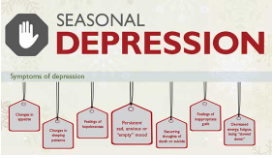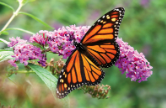Although people with depression seem to struggle all year around, there is something called SAD which is Seasonal Affective Disorder. It causes some people to be more down in one season rather than the other. There are many factors that come into play that make this happen.
Majority of the time seasonal depression happens during winter. If someone is more down in fall and winter versus spring and summer, it could be due to the dimming of lights, it gets dark quicker, and the temperature significantly drops. These play a factor with depression because “shorter days and less daylight may set off a chemical change in the brain leading to symptoms of depression.” Johns Hopkins Medicine says as they speak factually.
When it comes to sleepless nights, one of many symptoms, a lot of people like to take melatonin before going to bed thinking they will get better sleep but unfortunately it is the opposite. It turns out to not help as thought it would because “Melatonin, a sleep-related hormone, also has been linked to SAD. The body naturally makes more melatonin when it’s dark. So when the days are shorter and darker, more melatonin is made.” This makes melatonin not the best idea for those who have SAD.
The diagnosis of depression and SAD are actually not very different from each other besides some factors that come into play. Those with depression seem to have it all year around, having ups and downs, and all sorts of inbetweens. SAD means to have the same features only it is more severe at one time then the other, but they still have it all year round as well.
A lot of the time seasonal depression stems off general depression, meaning it starts with depression then it typically gains the symptoms of SAD as they have similar symptoms.
“Your symptoms begin to worsen significantly in the late fall or early winter.” Baptist Health explains as they go into what turns depression into SAD. The symptoms will intensify in fall/winter and outweigh the rest stemming from other seasons.
Baptist Health says general depression symptoms vary depending on how major it is. There is “Feeling worthless or guilty, loss of interest in your usual activities, feeling tired, restlessness, having memory problems or difficulty making decisions and persistent thoughts of death.”
While seasonal affective disorder comes with the symptoms of “Losing interest in activities you once enjoyed, having low energy and feeling sluggish, having problems with sleeping too much, having difficulty concentrating, feeling hopeless, worthless or guilty and having thoughts of not wanting to live.” Specific SAD symptoms for fall/winter would be “Oversleeping, appetite changes … weight gain and tiredness or low energy” explains Mayo Clinic.
It is easy to see the symptoms are very hard to tell apart and make a specific diagnosis if not known already. The only thing separating the diagnosis from each other is the main focus of when the symptoms are in play.
Therefore, general depression and SAD, although very similar, have their differences. Seasonal affective disorder can always look very different for each person but that is how it usually plays out. It is a category of depression that comes along with some of its own traits and takes place harshly in a season. It is typically treatable with light therapy, psychotherapy and medications. SAD is not very preventable, but always manageable.










